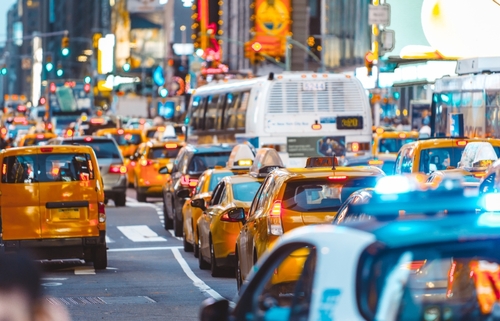
According to a new analysis that transportation data and analytics company INRIX, Inc. drew from congestion and commuting trends in nearly 1,000 cities worldwide, the roads continue to get busier even as work patterns shift.
In 2023, New York City topped the global ranking, with 101 hours of congestion delays, the INRIX 2023 Global Traffic Scorecard stated. It was not the only American city in the top five, though – Chicago followed in fifth place, with 96 hours of delays. Mexico City, London and Paris split the difference. All told, though, two other American cities also made the top 10 list: Los Angeles and Boston.
The report found that the typical U.S. driver lost 42 hours to traffic congestion and $733 worth of time – a leap of nearly $100 from the previous year. The 42-hour loss was up 11 percent compared to 2022, as midday trips jumped to bring about nearly as much traffic at noon as at 5 p.m.
“Traffic congestion is both a bane and a barometer of economic health; it symbolizes bustling activity yet simultaneously hampers it,” Bob Pishue, transportation analyst at INRIX, said. “Reflecting on 2023 and early 2024, the surge in traffic congestion in urban areas indicated a revival of economic hubbub post-COVID, but it also led to billions of dollars in lost time for drivers.”
The shift in patterns and travel peaks, at least, Pishue contributed in part to hybrid and remote work changing the nature of people’s interactions with the road. For example, the typical 9-to-5 workday of old seems to have become 10-to-4. Still, nine out of 10 of the largest U.S. metro areas saw a year-over-year increase in downtown trips, and INRIX dubbed America’s gridlock worse than ever.
To counter this, the company called for using data to create intelligent transportation systems and working actively to solve urban mobility problems. It released this report as a quantifiable benchmark for governments and cities worldwide.